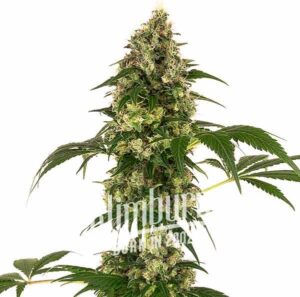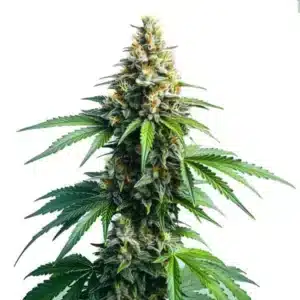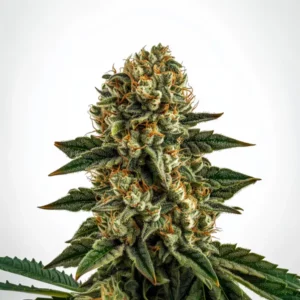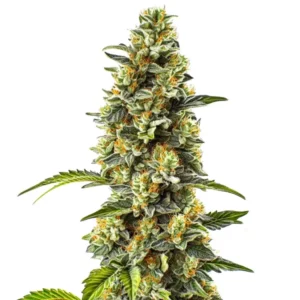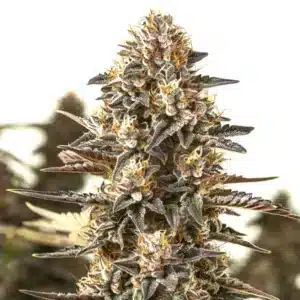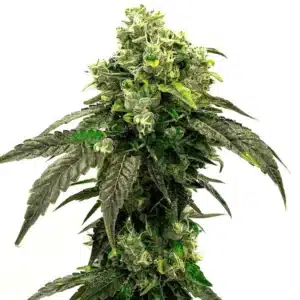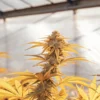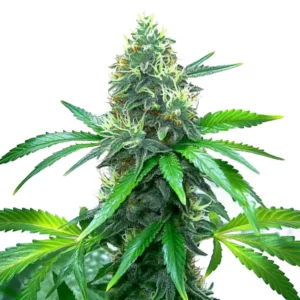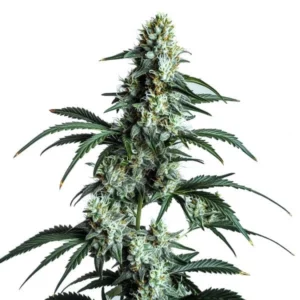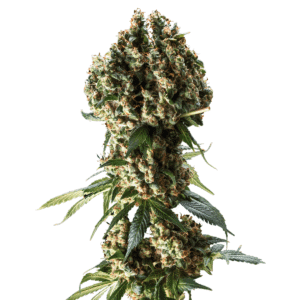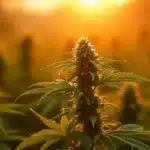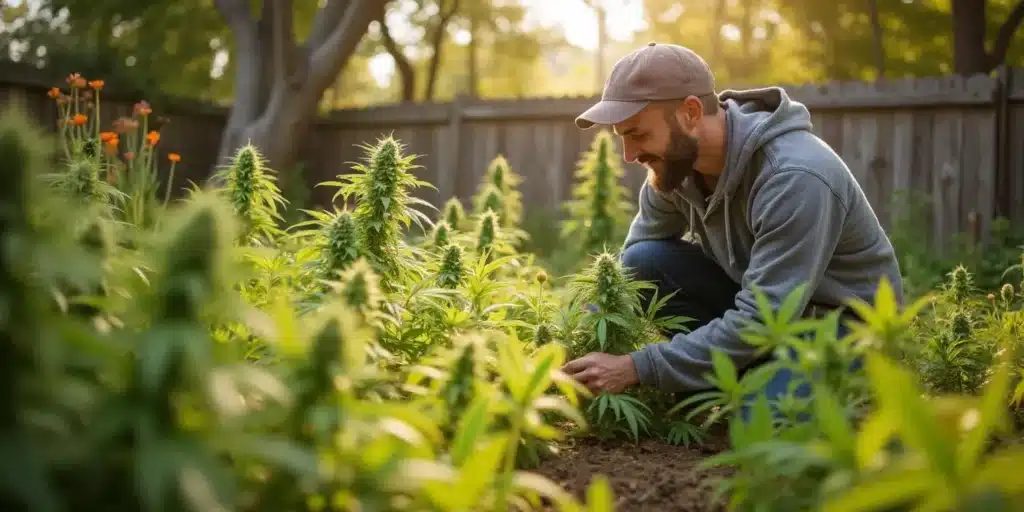
How Big Should My Plants Be After 1 Month Outdoor?
Growing plants outdoors brings a sense of joy and accomplishment. Whether it’s flower beds in your yard or a small vegetable garden, understanding the growth expectations for your plants can help ensure they thrive. Many gardeners often ask, ‘How big should my plants be after 1 month outdoor?’ While the answer varies depending on the plant species and conditions, this article aims to shed light on what you can expect regarding size and health after your plants have spent a month outdoors. Let’s dig into the exciting journey of outdoor plant growth!
Your plants undergo a fascinating transformation as they develop. Each stage of growth impacts how they will ultimately flourish. During the first month, plants transition from the delicate seedling phase to the lively early vegetative stage. It’s within these crucial weeks that you’ll see both height and leaf density increase.
Recommended Strains
Afghan x Haze
|
|
THC | 22% - 25% (Medium) |
|
|
Type | Feminized |
|
|
Yield | Medium |
|
|
Phenotype | 40% Indica / 60% Sativa |
Afghan Kush
|
|
THC | 16% - 21% (Medium) |
|
|
Type | Feminized |
|
|
Yield | Medium |
|
|
Phenotype | 90% Indica / 10% Sativa |
As a gardener, keeping an eye on the changes during these stages lets you know how your plants are doing. Are they growing taller? Are they branching out? Such observations provide valuable clues to their health and development as they adapt to their outdoor environment.
Seedling Stage
The first week of growth, known as the seedling stage, is often marked by excitement and hope. During this period, your plants should be observed vigilantly; they usually only grow a few inches, but this time is essential for establishing strong roots. A healthy seedling is characterized by vibrant green leaves and robust stems that stand strong against the elements. While early growth is slow, many growers begin to wonder: how big should my plants be after 1 month outdoor? Growth rates can vary depending on strain, climate, and care, but healthy plants should show significant vertical and leaf development by then.
Many experienced gardeners recommend keeping your seedlings in a nurturing environment throughout this stage. Aim for temperatures ranging between 70°F to 80°F (21°C to 27°C) paired with adequate humidity levels. This careful attention helps your seedlings thrive without the challenges posed by unpredictable outdoor weather.
Early Vegetative Stage
Your plants will start moving into the early vegetative stage by weeks two and three. During this critical phase, they often grow anywhere between 6 to 12 inches tall, depending largely on the plant type and the conditions in which they are being nurtured. The growth of leaves accelerates during this time, which is crucial for the process of photosynthesis.
Imagine your plants basking under the sun for at least 14 hours a day, soaking in that wonderful light! Providing sufficient lighting during this phase is paramount for robust growth. Many growers find that high-intensity lights or placing their plants in direct sunlight helps them achieve impressive results. Also, introducing nutrients during this stage can provide a significant boost, but timing and understanding are key.
Promos & Deals
Factors Influencing Growth Size
The size of your plants after one month can depend on a variety of factors. If you’re wondering, how big should my plants be after 1 month outdoor, the answer varies based on elements such as strain genetics, climate, sunlight exposure, soil quality, and watering practices. Recognizing these influences helps you set up the optimal conditions for your plants to thrive outdoors. Each of these elements plays a unique role in shaping the growth trajectory of your green friends.
Consider how each factor comes together to create the ideal ecosystem for your plants. Whether it’s choosing the right strain or enhancing the environment, small adjustments can lead to significantly healthier plants over time.
Strain Variation
Every plant strain has its unique personality, and understanding these traits will help elevate your gardening experience. For instance, hybrid strains often grow more robustly compared to sativa or indica versions under similar conditions. Strains like Blue Dream or Gorilla Glue #4 are celebrated for their rapid growth patterns, often exceeding average size expectations within the first month.
Before planting, take a moment to research the growth characteristics associated with each strain. Knowing the ins and outs of a specific strain, particularly in relation to your local climate, can set realistic expectations that align with your gardening goals. It’s like picking the best ingredients for a recipe, each choice comes together to create a delightful outcome!
Environmental Conditions
The environment in which your plants grow significantly influences their size and overall health. Elements such as temperature, sunlight, water, and soil type all play a pivotal role. Ideally, cannabis enjoys warm climates, with temperatures around 70°F to 85°F (21°C to 29°C) being most favorable. A balanced humidity level is also key, as too much moisture can encourage mold, while insufficient water can stunt growth. Many growers often ask, How big should my plants be after 1 month outdoor? While results vary, healthy plants typically reach between 12 to 24 inches in height by this stage, depending on strain and conditions.
The soil your plants are nurtured in can make a world of difference. Well-draining soil enriched with organic matter tends to produce healthier plants. Consider mixing compost with your soil to create a nutrient-rich blend. By ensuring that your plants are getting the essential macronutrients and micronutrients they need, you’re setting the stage for vigorous growth during these early stages.
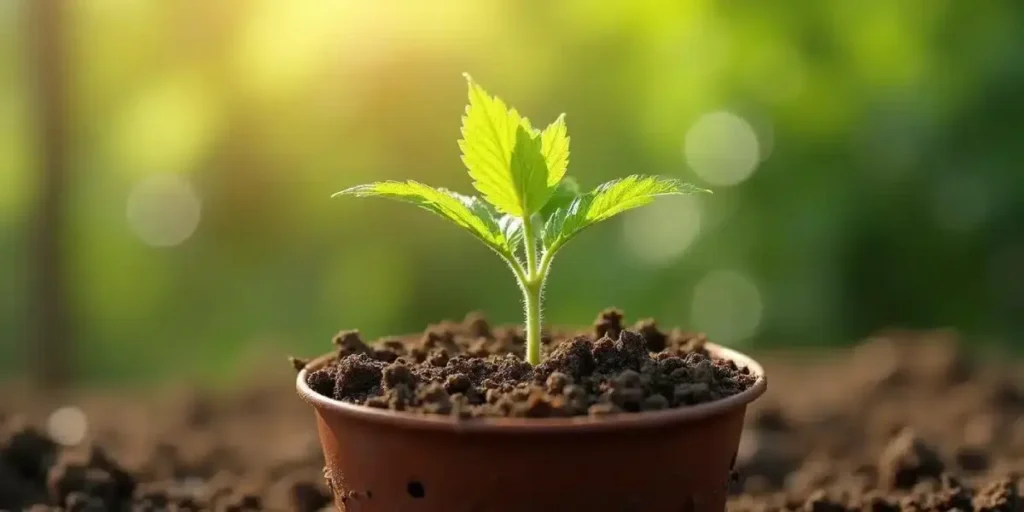
Common Signs of Healthy Growth
While not all plants grow at the same speed, there are several signs to look for indicating that your plants are thriving. By understanding these characteristics, you can feel more connected to your plants’ journeys and make informed decisions along the way.
Growth is a process filled with ups and downs, but recognizing healthy signs can boost your confidence as a gardener and help build a stronger relationship with your plants.
Foliage Health
One of the best indicators of a healthy plant is its foliage. Check for vibrant green leaves! If you notice yellowing or wilting leaves, it may point to some issues like nutrient deficiency or overwatering, both of which can hinder growth. Regularly inspecting your plants can help you catch these potential problems early on. Many growers also ask, ‘How big should my plants be after 1 month outdoor?’—and the answer often depends on genetics, environmental conditions, and overall plant health, which is why early detection of stress signs is crucial.
Furthermore, the appearance of new leaves is a wonderful sign that your plant is thriving. During the vegetative stage, a healthy cannabis plant typically showcases several new sets of leaves each week. This pattern indicates that photosynthesis is functioning well, allowing the plant to harness sunlight energy effectively for growth.
Root Development
While it’s not always visible, the root system of a plant is essential for its overall health. Ideally, roots should extend deep into the soil, establishing a solid anchor for the plant above ground. If you can, gently checking the roots can reveal important insights about your plant’s health. White and firm roots indicate a thriving plant, while dark or mushy roots could suggest issues like overwatering or root rot.
By focusing on the health of the root system, you’re ensuring that your plants have a strong foundation. After all, just like a skyscraper needs solid ground to reach new heights, plants require robust root structures to support their growth above the soil.
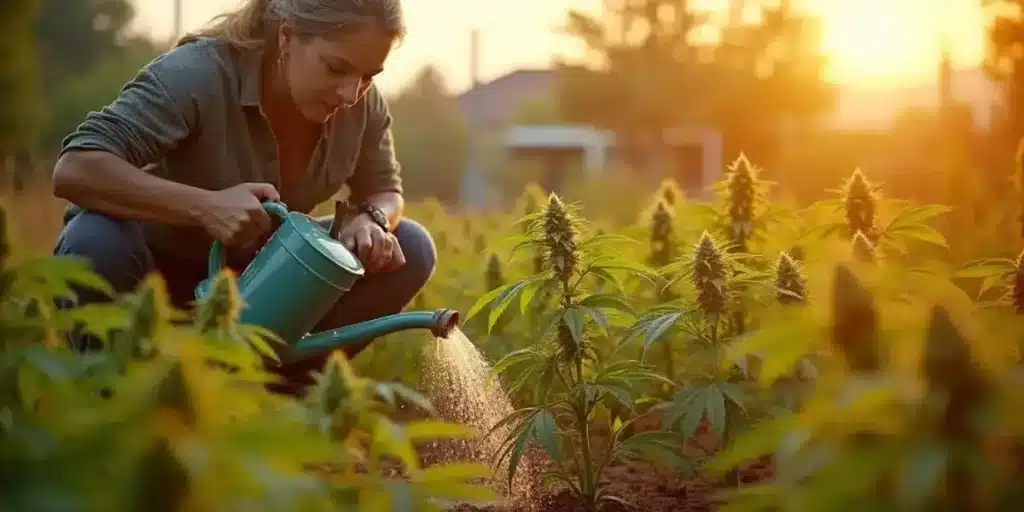
Actionable Tips for Optimal Growth
To maximize your plants’ growth during the first month, here are some practical tips that can make a real difference. Many growers often ask, ‘How big should my plants be after 1 month outdoor?’ While results vary depending on strain, environment, and care, applying these strategies can enhance the overall health and size of your plants in a meaningful way.
Like any good recipe, success lies in the details. The following tips will help guide you through the gardener’s journey with confidence!
Proper Watering Techniques
Watering is a fundamental aspect of the growth process. Think of it as providing life’s nectar to your plants! Cannabis generally thrives on a wet-dry cycle, which means letting the soil dry out a bit before watering again. This method encourages healthier root growth and prevents the formation of standing water, which can lead to root rot.
Here’s a handy tip: try the finger test! Insert your finger into the soil about an inch deep. If it feels dry, it’s time for a good drink for your plants. Exercising caution can prevent overwatering, which can lead to unhappy plants.
Feeding Your Plants
Providing adequate nutrition supports healthy growth. In the early vegetative stage, plants benefit from nitrogen-rich nutrients to bolster their leaves and stems. Many gardeners opt for organic fertilizers that offer a balanced nutrient profile while introducing beneficial microorganisms to the soil.
When feeding your plants, always adhere to the specific guidelines that come with the fertilizer you choose. Over-fertilizing can lead to nutrient burn, damaging your precious plants. Keep an eye on how your plants respond to feeding; adjusting your approach as needed is part of the learning process!
When to Adjust Your Expectations
When growing plants, maintaining realistic expectations about their growth size in the first month is essential. Not every plant will grow at the same rate, and fluctuations can arise due to various factors. Gardeners often ask, ‘How big should my plants be after 1 month outdoor?’—but the answer depends on genetics, climate, and care. Knowing this helps cultivate patience and better decision-making throughout the growing process.
Gardening often teaches us flexibility, just like life! Being mindful and open to adjustments can lead to healthier plants and better outcomes overall.
Signs that Your Plants are Stunted
If you find that your plants are consistently shorter than expected or displaying poor leaf growth, it might be a sign that they aren’t receiving optimal care. Paying close attention to their overall health and growth patterns is crucial. Stunted growth can often indicate underlying issues such as nutrient deficiencies or environmental stress.
If you suspect that your plants are struggling, be proactive about identifying the root cause. Understanding your plants’ needs will allow you to better respond to their challenges and guide their recovery and growth.
Making Necessary Adjustments
Don’t hesitate to make adjustments if you notice your plants aren’t thriving as expected. Maybe it’s time to tweak your watering habits, enrich the soil with necessary nutrients, or provide additional light. Each modification can significantly enhance your plants’ potential, helping them catch up and flourish in their outdoor environment.
Gardening is a journey, and every action you take contributes to your plants’ story. If you’ve ever wondered, ‘How big should my plants be after 1 month outdoor?’, remember that growth can vary depending on strain, climate, and care. Embrace the process of learning and growing along with your plants!
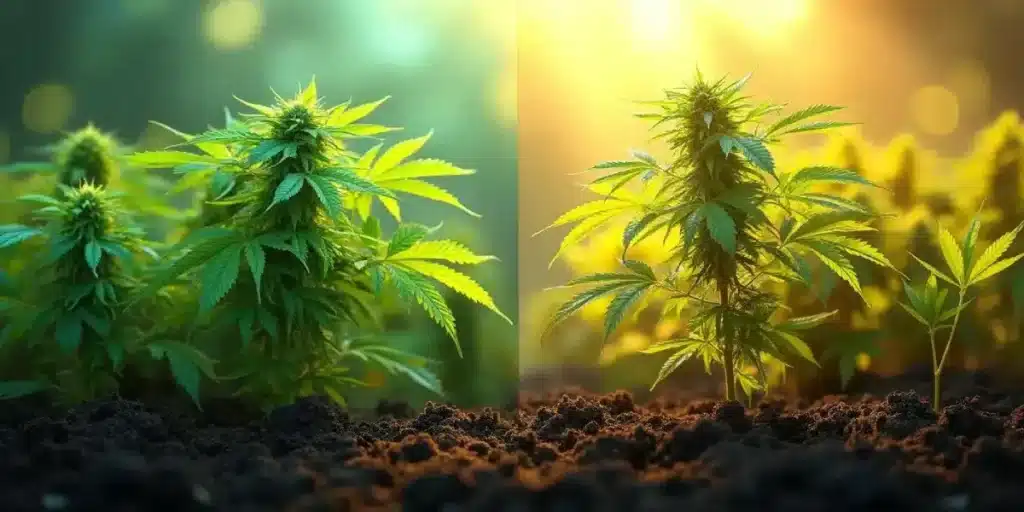
Recommended Strains for Outdoor Growth
Choosing the right strain is a fundamental step in achieving successful outdoor growth. Here are three strains that thrive beautifully in outdoor conditions:
- Blue Dream: Renowned for its resilience, Blue Dream is a balanced hybrid that adapts well to outdoor environments and boasts impressive growth patterns.
- Super Lemon Haze: This strain delights in sunny climates, offering generous yields while adding a pop of color to your garden.
- OG Kush: A classic favorite, OG Kush is well-suited for outdoor growth and is cherished for its unique effects and adaptability.
FAQs about How big should my plants be after 1 month outdoor
How tall should cannabis plants be after one month outdoors?
After spending one month outdoors, healthy cannabis plants can typically range between 6 to 12 inches in height. However, keep in mind that this can vary based on the strain and environmental conditions they’ve been exposed to.
What should I do if my plants aren’t growing well?
If you’re noticing stunted growth, take a moment to assess your watering methods, nutrient levels, and environmental setups such as light and temperature. Adjustments in these areas can often make a significant difference!
How often should I water my plants outdoors?
Cannabis plants thrive on a wet-dry cycle. Water them when the top inch of soil feels dry, which generally translates to every few days, depending on the prevailing weather conditions.
What nutrients do my plants need in the first month?
During the first month, nitrogen is vital for supporting growth. Opt for organic fertilizers that provide a well-rounded nutrient profile, ensuring your plants get the essentials they need.
Can I grow cannabis from seeds directly outdoors?
Absolutely! You can plant cannabis seeds directly outdoors as long as the weather is warm enough and there’s no risk of frost. Just be sure to select strains that are well-suited for outdoor growth to enhance your chances of success.


